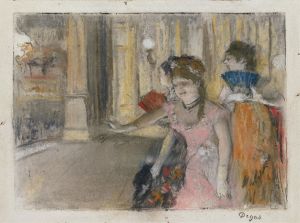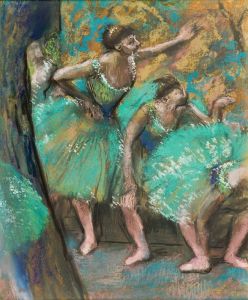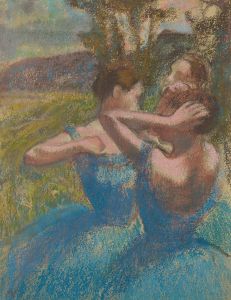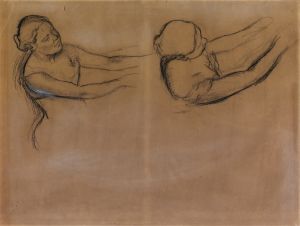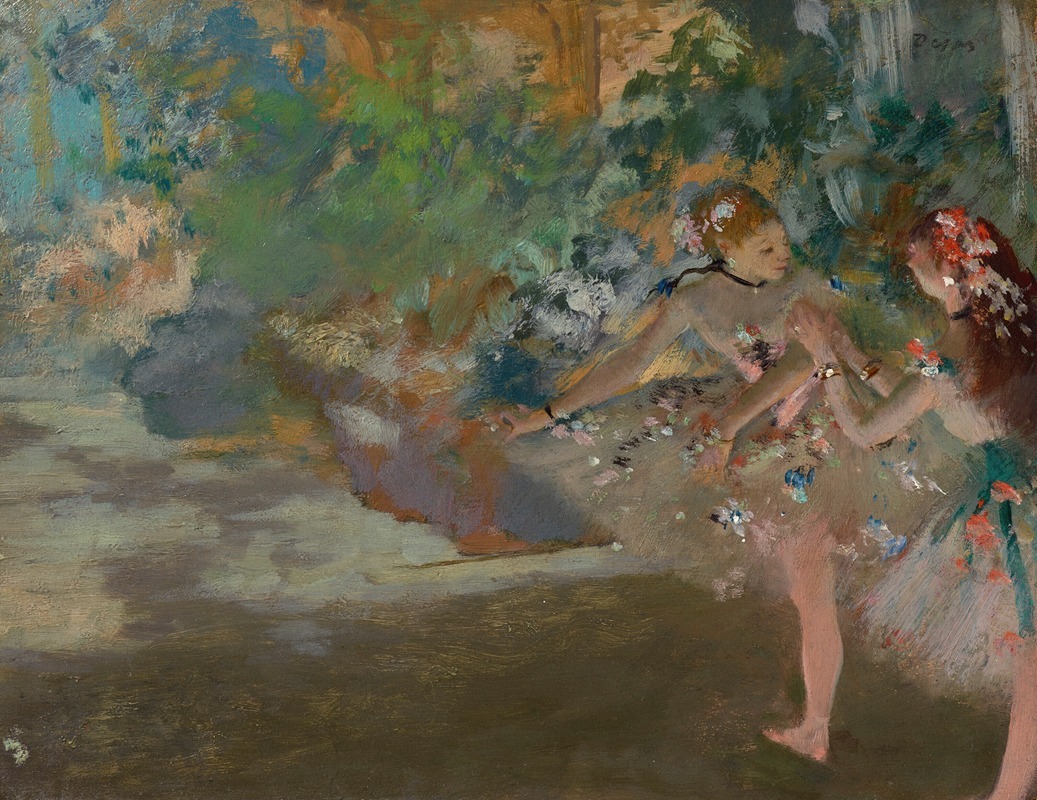
Deux danseuses sur la scène
A hand-painted replica of Edgar Degas’s masterpiece Deux danseuses sur la scène, meticulously crafted by professional artists to capture the true essence of the original. Each piece is created with museum-quality canvas and rare mineral pigments, carefully painted by experienced artists with delicate brushstrokes and rich, layered colors to perfectly recreate the texture of the original artwork. Unlike machine-printed reproductions, this hand-painted version brings the painting to life, infused with the artist’s emotions and skill in every stroke. Whether for personal collection or home decoration, it instantly elevates the artistic atmosphere of any space.
"Deux danseuses sur la scène" (Two Dancers on the Stage) is a notable work by the French artist Edgar Degas, who is renowned for his depictions of ballet dancers. Created in the late 19th century, this painting exemplifies Degas's fascination with the world of dance and his innovative approach to capturing movement and the human form.
Edgar Degas was born on July 19, 1834, in Paris, France, and became one of the founding members of the Impressionist movement, although he preferred to be called a realist. His work is characterized by its emphasis on movement, unusual perspectives, and candid portrayals of modern life. Degas's interest in ballet began in the 1860s, and he produced numerous works featuring dancers, both in rehearsal and on stage.
"Deux danseuses sur la scène" is a pastel on paper, a medium Degas frequently used for its ability to convey the delicate textures and vibrant colors of the ballet. The painting depicts two ballet dancers on stage, captured in a moment of performance. Degas's use of pastel allows for a soft yet vivid portrayal of the dancers' tutus and the stage lighting, creating a sense of immediacy and movement.
The composition of the painting is notable for its dynamic use of space and perspective. Degas often employed unconventional angles and cropping in his work, influenced by the burgeoning field of photography and Japanese prints. In "Deux danseuses sur la scène," the dancers are positioned slightly off-center, with one dancer in the foreground and the other slightly behind, creating a sense of depth and spontaneity. This composition draws the viewer's eye across the canvas, mimicking the experience of watching a live performance.
Degas's attention to detail is evident in the rendering of the dancers' poses and expressions. He meticulously captures the tension and grace of their movements, highlighting the physical demands of ballet. The dancers' costumes are depicted with a keen eye for texture and color, reflecting the opulence and elegance of the ballet stage.
The painting also reflects Degas's interest in the interplay of light and shadow. The stage lighting casts subtle shadows on the dancers and the floor, enhancing the three-dimensionality of the scene. This use of light not only adds to the realism of the depiction but also contributes to the overall mood and atmosphere of the painting.
"Deux danseuses sur la scène" is part of a larger body of work by Degas that explores the world of ballet. His paintings, pastels, and sculptures of dancers provide a unique insight into the behind-the-scenes world of the ballet, capturing both the beauty and the discipline of the art form. Degas's work has had a lasting impact on the art world, influencing subsequent generations of artists and shaping the way dance is portrayed in visual art.
Today, "Deux danseuses sur la scène" is held in various private and public collections, and it continues to be celebrated for its artistic innovation and its sensitive portrayal of the ballet. Degas's ability to capture the fleeting moments of movement and emotion in his work remains a testament to his skill and vision as an artist.






